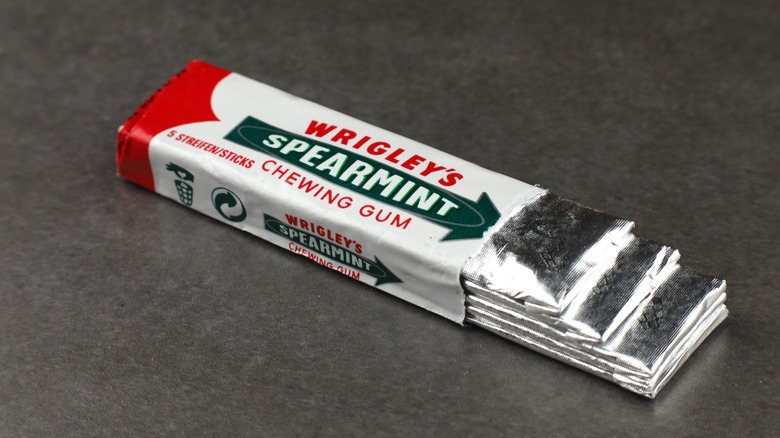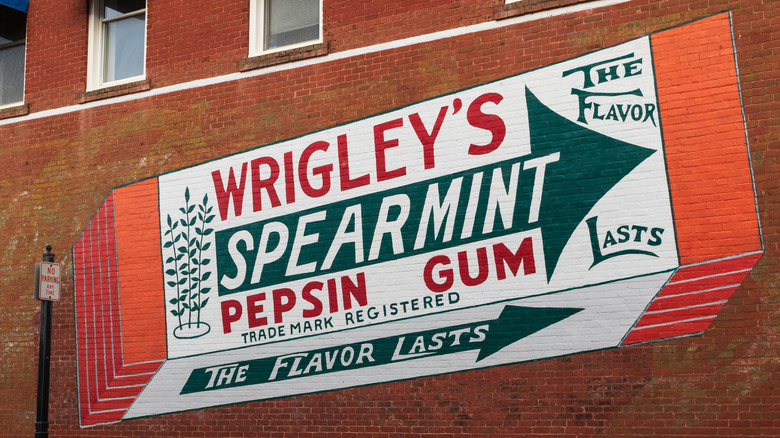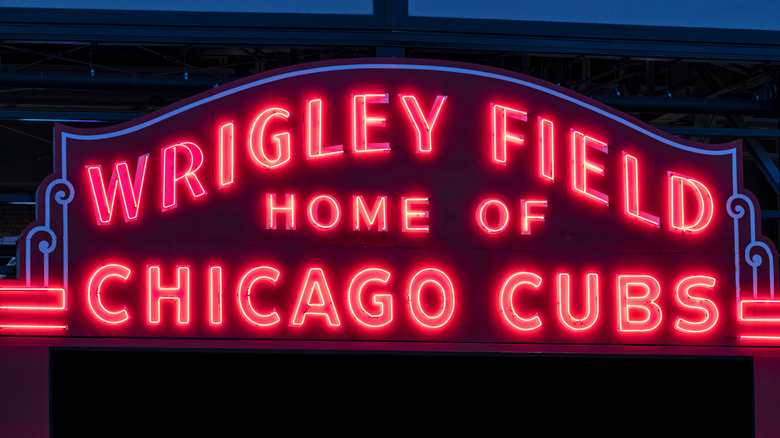Wrigley Got Its Start With 6 Million Pieces Of Free Gum
Wrigley's Spearmint Gum can be found in nearly every convenience store, supermarket, and candy store in the U.S. The iconic white packaging with its prominent arrow is largely unchanged — the words "chewing gum" were dropped from the label, and the arrow went from a one-headed arrow to a two-headed arrow in 2002 — since it first graced store shelves in 1893 (per 1000 Logos).
William Wrigley started the company in Chicago in 1893 and was a marketing genius. Wrigley began his career in the family soap business, where he began offering a free box of baking soda with every purchase as an incentive for customers to buy a box of soap. The baking soda proved to be more popular than the soap, so Wrigley nimbly pivoted into the baking soda business, offering two free packs of chewing gum with every purchase (per Better Marketing). When the gum became more popular than the baking soda, well, you can guess the rest.
A bold marketing move
In the days before the internet, you had to be imaginative if you wanted to get people to notice your product, and clearly, William Wrigley was no stranger to unforgettable marketing techniques. Advertising images of Wrigley's Gum could be seen everywhere, including in Times Square on a billboard a full New York City block long (per New York Public Library). Wrigley's marketing mantra of "Tell 'em quick and tell 'em often" was hard to ignore.
To continue to grow his gum business, Wrigley had to find consumers who fared well economically and were willing to spend their money on non-essentials. Very few people had telephones in 1915, but those who did were undoubtedly able to afford a pack of gum, so Wrigley did something unconventional with his marketing. He mailed four sticks of gum to all 1.5 million addresses in the United States that were listed in the phonebook (via The Dinner Party Download), and by 1919, his gum was in the homes of seven million people across the country. William Wrigley's bold move contributed to making his chewing gum company worth over $12 million by the time of his death in 1932 (via CNN Money).
A Chicago icon
Despite the over-the-top marketing tactics that saw his name plastered on billboards and signs across the country, William Wrigley knew the value of being subtle when it mattered. When the Wrigley Building was erected in Chicago in 1921, he insisted that no signage advertising his product would be put on its outside walls. Wrigley believed this low-key move would attract more attention to his product than an ostentatious name tag (per Made in Chicago Museum). However, Wrigley's moniker can be seen on one iconic building in Chicago today. Wrigley Field has borne his name since 1926 — he bought the Chicago Cubs in 1921.
Wrigley's unusual marketing practices must have worked because, over a century later, his product is an iconic part of U.S. culture. In 2016, Mars, Inc. announced the purchase of Wrigley's (via Food Processing), changing the name of the candy sector of their business to Mars Wrigley Confectionary. However, their headquarters continues to be located in Chicago, where William Wrigley started it all, and his name is still on every pack of gum.


